The Brest Fortress
|
|
|
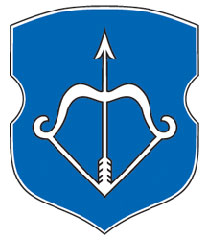
|
DECREE OF THE PRESIDIUM OF THE SUPREME SOVIET OF THE USSR
ON THE AWARD OF THE BREST FORTRESS THE HONORARY TITLE HERO-FORTRESS
Reflecting a treacherous and surprise attack of the Nazi invaders on the Soviet Union, the defenders of the Brest Fortress in extremely difficult conditions in the fight against the Nazi aggressors showed outstanding military valor, heroism and courage which became a symbol of unparalleled strength of the Soviet people.
Noting the outstanding services of defenders of the Brest Fortress to the country and to commemorate the 20th anniversary of the victory of the Soviet people during the Great Patriotic War of 1941 - 1945, assign the fortress the honorary title Hero-Fortress and the Order of Lenin and the Gold Star medal.
The Kremlin, Moscow.
May 8, 1965
Chairman of the Presidium of the Supreme Soviet of the USSR
A. MIKOYAN
Secretary of the Presidium of the Supreme Soviet of the USSR
M. GEORGADZE
|
|
 The Brest Fortress or Fortress of Brest-Litovsk is a fortress in the city of Brest in Belarus. The city and the fortress are located in the southwestern part of the Brest region, at the confluence of the Mukhavets in the Western Bug rivers, at the state border of Poland. The Brest Fortress or Fortress of Brest-Litovsk is a fortress in the city of Brest in Belarus. The city and the fortress are located in the southwestern part of the Brest region, at the confluence of the Mukhavets in the Western Bug rivers, at the state border of Poland.
The heroic defense of the Brest fortress began on the first day of the Great Patriotic War.
The Brest Fortress, built by Tsarist Russia in 1833-1842 in two kilometers to the west of Brest, on the right bank of the Bug River, was used for the quartering of the Soviet Army.
The enemy expected to take the fortress by swift blow. But only managed to capture the bridges over the River Bug, to break into the city of Brest and come close to the walls of the fortress. However, the Nazis attempt to take the fortress on the run was repulsed by the defenders.
Small garrison entered into an unequal struggle against overwhelming odds. Soldiers and commanders loyal to their military oath, made a small patch of land into a major center of resistance.
By soul of defense and powerful organizing force were communists and Komsomol members. They managed to rally the forces of soldiers, to organize them into battle groups and lead the defense. Applying bold counterattack, arranging ambushes and night raids, the heroic defenders of the Brest Fortress inflicted damage to the enemy and forced the Nazis to keep substantial forces here.
In late June, the enemy launched the general assault of the fortress. Powerful air strikes, heavy fire of artillery, infantry and tank attack allowed the Nazis to seize a large area of the fortress and destroy most of the defenders.
At that time a separate group of soldiers, still maintaining some buildings of the fortress, its deep caves and passages made a stand against the enemy. The last pockets of the defense were in the Citadel and the strengthening of Kobrin. Just at that spot the inscriptions left by the defenders of the fortress, and testifying their heroic and selfless struggle were found.
Nothing could break the indomitable will and courage of the immortal garrison: either hunger, or thirst, or even great loss.
Heroic defense of the Brest Fortress went on about a month. It demonstrated to the world the greatest firmness and courage, heroic power of the Soviet soldiers. It was a legendary feat of the people infinitely loved their country and sacrificed their life for her. On July 28, 1944 during the Lublin-Brest Offensive Operation, the Soviet troops liberated Brest by storm.
The fortress on the Bug River has become the symbol of the eternal glory of heroes. On the unprecedented feat of the Soviet soldiers of many nationalities who fought in the fortress, the Citadel and its fortifications, reminds the Memorial Complex of the Brest Fortress since 1971. In the territory of the Complex, a number of monuments in memory of the heroes were built; a museum of the Brest Fortress defense was open.
|
Volgograd (Stalingrad)
|
|
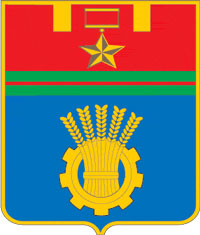
|
DECREE OF THE PRESIDIUM OF THE SUPREME SOVIET OF THE USSR
ON THE AWARD OF THE HERO-CITY VOLGOGRAD THE ORDER OF LENIN AND THE GOLD STAR MEDAL
For its outstanding services to the country, courage and heroism, shown by the workers of the city of Volgograd in the fight against the Nazi invaders, and to commemorate the 20th anniversary of Victory in the Great Patriotic War of 1941-1945 to hand the heroic city of Volgograd, the Order of Lenin and the Gold Star Medal.
The Kremlin, Moscow.
May 8, 1965
Chairman of the Presidium of the Supreme Soviet of the USSR
A. MIKOYAN
Secretary of the Presidium of the Supreme Soviet of the USSR
M. GEORGADZE
|
|
 Volgograd is a city in the south-east of European Russia, administrative center of the Volgograd region, a Hero-City. It is located on the right bank of the Volga River in its lower reaches. The city stretches 70 km along the Volga River. It was named Stalingrad from 1925 to 1961. Volgograd is a city in the south-east of European Russia, administrative center of the Volgograd region, a Hero-City. It is located on the right bank of the Volga River in its lower reaches. The city stretches 70 km along the Volga River. It was named Stalingrad from 1925 to 1961.
Volgograd (Stalingrad) is a large industrial and cultural center, a communications node, connecting the south with the center of the country.
In mid-July 1942, the enemy broke into the big bend of the Don. The Soviet troops in fierce defensive battles delayed the enemy's advance, but Stalingrad was still in danger.
The city under the direction of the Stalingrad party organization was preparing for the defense. The soldiers and people were building fortifications on the outskirts of the city. Armed units were set up in the enterprises.
In late August, the enemy resumed the offensive and on August 23, broke through to the Volga northward of Stalingrad. At the same time the enemy planes flew a massive raid on the town. To September 12, fighting in the outskirts of the city continued.
On September 13, the enemy by entering into battle additional 9 divisions and one brigade began to assault the city. Unparalleled and intensity of fighting spread out in the streets. The battle stopped either in the afternoon, or at night. “Beyond the Volga there is no place for us” — under this motto, the defenders were fighting for each quarter, street, and house.
Stalingrad workers were as courage as brave soldiers. When street fighting approached directly to the factories, they defended each factory building, each shop with arms along with the warriors.
In summer and autumn of 1942, echelons of military and weapons replenishment reached the Stalingrad region. Supreme High Command General Headquarters directed there most of the reserves, planning a major counteroffensive. It was foreseen to break through the enemy lines on the flanks of the main enemy now concentrated in the area of Stalingrad, to encircle it and destroy.
Despite the extremely difficult conditions, the defenders of Stalingrad held out.
On November 19, 1942, after careful preparation the Soviet troops launched an offensive and by 23 November, they closed the encirclement of the enemy forces. 22 divisions were marooned — more than 330 thousand German soldiers, officers and generals. In early February 1943, the surrounded group was eliminated.
The victory at Stalingrad was the largest military-political event. It made a huge contribution to the radical change in the Great Patriotic War and the Second World War.
Remarkable monument — the ensemble on Mamayev Kurgan will always remind of the greatness of the immortal exploits of the heroic defenders of Stalingrad.
In our country — in granite, in bronze, and metal —monuments to the soldiers, partisans and underground fighters, those who selflessly hammered into the rear of the sacred weapon of victory, are towering.
In the history of mankind the victory of the Soviet troops at Stalingrad became a clear evidence of an irresistible force of the multinational Soviet state, the monolithic unity of the army and people, showing all of the humanity's greatest examples of courage and fortitude of the Soviet soldiers. It was the beginning of radical change in the course of not only the Great Patriotic War, but the entire World War II.
|
Kiev
|
|
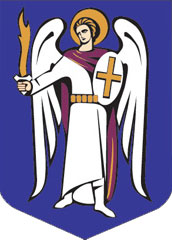
|
DECREE OF THE PRESIDIUM OF THE SUPREME SOVIET OF THE USSR
ON THE AWARD OF THE HERO-CITY KIEV THE GOLD STAR MEDAL
For its outstanding services to the country, courage and heroism, shown by the workers of the city of Kiev in the fight against the Nazi invaders, and to commemorate the 20th anniversary of Victory in the Great Patriotic War of 1941-1945 to hand the heroic city of Kiev, awarded the Order of Lenin earlier, the Gold Star Medal.
The Kremlin, Moscow.
May 8, 1965
Chairman of the Presidium of the Supreme Soviet of the USSR
A. MIKOYAN
Secretary of the Presidium of the Supreme Soviet of the USSR
M. GEORGADZE
|
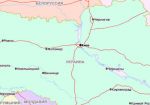 Kiev is the capital of the Ukraine, a Hero-City. It is located on the Dnieper River. According to a legend, it was founded by three brothers (Kii, Shchek and Khoriv) and the sister Swan, as the center of the Slavic glade of Polans. It was named in honor of the elder brother. Kiev is the capital of the Ukraine, a Hero-City. It is located on the Dnieper River. According to a legend, it was founded by three brothers (Kii, Shchek and Khoriv) and the sister Swan, as the center of the Slavic glade of Polans. It was named in honor of the elder brother.
In Kiev — the capital of the Soviet Ukraine — the war came at dawn on June 22, 1941. The enemy first bombs hit the city.
In the beginning of the war, when the immediate danger did not threaten the city, the workers of Kiev under the guidance of the Communist Party (Bolsheviks) of the Ukraine did everything possible to turn the city into a fortress. As soon as possible they held military draft to the Soviet Army, built the first defensive band, formed detachments of the militia.
The enemy attempted to seize the city on the move, but could not overcome the stubborn resistance of the South-Western Front. Two months of persistent and fierce fighting against overwhelming odds continued. In late August, the Nazi Command turned strong tank group to the south, bypassing Kiev. Because of the threat of the Soviet troops to be encircled, on the order of the Stavka of September 19, Kiev was abandoned.
In terms of occupation, struggle against the enemy did not stop; every day was celebrated by the feats of the Soviet patriots. The headquarters of struggling Kievans was an underground city party committee. Thousands of partisans and underground fighters acted bravely in the city and its surroundings.
During the broad offensive of the Soviet army in autumn 1943, the 1st Ukrainian Front held the Kiev advancing operation. The call of the Communist Party “Free Kiev to the 26th anniversary of the Great October Revolution” has found a warm response from the Soviet soldiers. In the battle of the Dnieper, in the liberation of Kiev the Soviet troops and assisting partisans and underground resistance of the Ukraine showed bravery, courage and heroism. It was truly a legendary operation.
Together with the Soviet troops in the battles for the liberation of Kiev, the 1st Czechoslovak Independent Brigade fought.
The 26th anniversary of the Great October Socialist Revolution was celebrated in the capital liberated from the enemy.
Numerous monuments, obelisks and Municipal Museum of the Great Patriotic War opened in Kiev, is a terrible reminder of the heroic struggle of the Ukrainian capital.
|
Leningrad
|
|
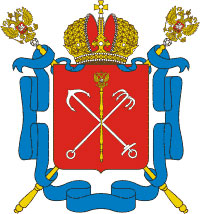
|
DECREE OF THE PRESIDIUM OF THE SUPREME SOVIET OF THE USSR
ON THE AWARD OF THE HERO-CITY LENINGRAD THE GOLD STAR MEDAL
For its outstanding services to the country, courage and heroism, shown by the workers of the city of Leningrad in the fight against the Nazi invaders under the difficult conditions of long blockade, and to commemorate the 20th anniversary of Victory in the Great Patriotic War of 1941-1945 to hand the heroic city of Leningrad, awarded the Order of Lenin earlier, the Gold Star Medal.
The Kremlin, Moscow.
May 8, 1965
Chairman of the Presidium of the Supreme Soviet of the USSR
A. MIKOYAN
Secretary of the Presidium of the Supreme Soviet of the USSR
M. GEORGADZE
|
|
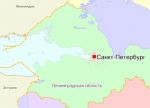 St. Petersburg (from 18 (31) August 1914 to January 26, 1924 — Petrograd, from January 26, 1924 to September 6, 1991 — Leningrad) is the federal city of the north-west Russia, the most important economic, industrial, scientific and cultural center after Moscow, a major transport hub. It is the administrative center of the Leningrad region and the North-West Federal District, and the center of Saint-Petersburg urban community. St. Petersburg (from 18 (31) August 1914 to January 26, 1924 — Petrograd, from January 26, 1924 to September 6, 1991 — Leningrad) is the federal city of the north-west Russia, the most important economic, industrial, scientific and cultural center after Moscow, a major transport hub. It is the administrative center of the Leningrad region and the North-West Federal District, and the center of Saint-Petersburg urban community.
Developing a plan of attack on the Soviet Union, the Nazi aggressors set the capture of Leningrad as an immediate task.
In July 1941, during the bloody battles, the forces of the North-West and North fronts, sailors of the Baltic Fleet, kept the enemy on distant approaches to Leningrad. Militia actively participated in the defense of Leningrad. However, with heavy losses in early September, the Nazis managed to reach the city. Unable to capture Leningrad on the move, the enemy turned to a long siege.
The Soviet soldiers selflessly reflected a powerful blow of the enemy. Unable to overcome the resistance of the heroic defenders of Leningrad, the German command tried to stifle the city by the starvation blockade, to destroy it by barbaric air raid and artillery shelling.
Courage and fortitude of the Soviet soldiers and the people merged into a single effort to defend their native city. Their unity was essential to the invincibility of Leningrad.
The Supreme Command, the Military Council of the Leningrad Front, Leningrad party organization took all the measures to strengthen the defense of Leningrad. There was a lot of work to build defensive structures. Industrial enterprises during the heavy blockade gave equipment, weapons and ammunition to the front. Great role in supplying Leningrad played the only communication across Lake Ladoga, called the Road of Life. Protection of the city of Lenin was a popular affair. The city lived, worked and fought heroically.
In January 1943, after careful preparation the troops of the Leningrad and Volkhov Fronts took the Shlisselburg-Sinyavin Offensive, and on January 18, 1943 were connected. The blockade was broken.
On January 14, 1944 the troops of the Leningrad, Volkhov and 2nd Baltic Fronts, with the support of the Baltic Fleet launched a decisive offensive at Leningrad and Novgorod.
The guerrillas actively helped the Soviet soldiers. They pounded on the approaching fascist reserves, broke the enemy's communications.
In the end of January 1944, a magnificent city, which squares are watered with the sweat and blood of the heroic defenders, was liberated from the enemy blockade.
Leonid Brezhnev named the Leningrad feat one “... of the most prominent, the most amazing feats of the people and the army in the history of wars on earth”.
|
Moscow
|
|
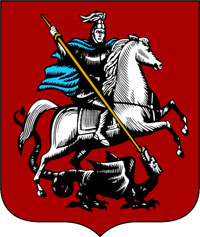
|
DECREE OF THE PRESIDIUM OF THE SUPREME SOVIET OF THE USSR
ON THE AWARD OF MOSCOW THE HONORARY TITLE HERO-CITY
For its outstanding services to the country, mass heroism and courage, shown by the workers of the capital of the United Soviet Socialist Republics in the fight against the Nazi invaders, and to commemorate the 20th anniversary of Victory in the Great Patriotic War of 1941-1945 to award the city of Moscow the honorary title Hero-City, and to hand the Order of Lenin and the Gold Star Medal.
The Kremlin, Moscow.
May 8, 1965
Chairman of the Presidium of the Supreme Soviet of the USSR
A. MIKOYAN
Secretary of the Presidium of the Supreme Soviet of the USSR
M. GEORGADZE
|
|
 Moscow is the capital of the Russian Federation, federal city, the administrative center of the Central Federal District and the Moscow region, a Hero-City. It is the most populous city in Russia and Europe, a major transportation hub, as well as a political, economic, cultural and scientific center of the country. Moscow is the capital of the Russian Federation, federal city, the administrative center of the Central Federal District and the Moscow region, a Hero-City. It is the most populous city in Russia and Europe, a major transportation hub, as well as a political, economic, cultural and scientific center of the country.
Moscow is the heart of our homeland. Hence the Central Committee of the Communist Party of the Soviet Government, the State Defence Committee, and the Supreme Command provided leadership of fighting on the front and rear work by mobilizing the Soviet people to fight against the invaders.
In late September 1941, the German fascist army, having numerical superiority in tanks, planes, artillery and infantry began to advance on Moscow. One of the biggest battles of the Great Patriotic War was unfolded.
Warriors of the Western Front and the Moscow area of defense, the workers of the capital made every effort to repel the enemy attacks. Along with the troops Muscovites fought bravely — volunteers in the divisions of the national militia.
At the urging of the Moscow city and regional party committees, hundreds of thousands of Muscovites in the rain and snow build fortifications, erected barricades on the outskirts of the city. The workers of the capital plants forged weapons for the front at noon and at night. Moscow adopted a stern look of the front city. On October 19, the city entered a state of siege.
The whole country stood up to defend the capital. From all the regions and republics convoys of troops and weapons moved to Moscow. Building on a solid rear, the Soviet soldiers stifled the enemy offensive.
On November 7, 1941, as usually, a military parade was held on Red Square. The working people from all over the world took this parade as an expression of unwavering determination of the Soviet people to defend their capital, as an expression of strength and confidence in victory.
On November 15-16, the Germans resumed their offensive. On November 27, 1941 The Pravda newspaper published an appeal to the defenders of Moscow, “It is impossible to let the enemy to Moscow” And the enemy was stopped.
Giant defensive battle on the outskirts of the capital was won by the Soviet Army, the Soviet people.
On December 5-6, 1941 the Soviet counter-offensive started. The enemy was driven from the capital. The defeat of the Nazis near Moscow was the beginning of the radical change in the course of the war.
The victory of the Soviet Army near Moscow was of great historical significance. It had a decisive influence on the course of the Great Patriotic War and the Second World War. Afield near Moscow was the myth of the invincibility of the German army.
The Moscow feat will go down in history as a symbol of our Motherland and the unprecedented strength of mass heroism.
|
Odessa
|
|
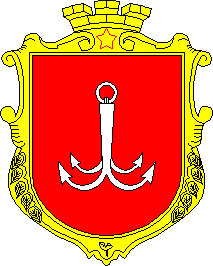
|
DECREE OF THE PRESIDIUM OF THE SUPREME SOVIET OF THE USSR
ON THE AWARD OF THE HERO-CITY ODESSA THE ORDER OF LENIN AND THE GOLD STAR MEDAL
For its outstanding services to the country, courage and heroism, shown by the workers of the city of Odessa in the fight against the Nazi invaders, and to commemorate the 20th anniversary of Victory in the Great Patriotic War of 1941-1945 to hand the heroic city of Odessa, the Order of Lenin and the Gold Star Medal.
The Kremlin, Moscow.
May 8, 1965
Chairman of the Presidium of the Supreme Soviet of the USSR
A. MIKOYAN
Secretary of the Presidium of the Supreme Soviet of the USSR
M. GEORGADZE
|
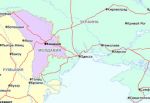 Odessa is a city (since 1794) in the Ukraine, the administrative center of the Odessa region, the largest port city on the Black Sea, a major industrial, cultural, scientific, and resort center. It is a centre of highways and railroads. The number of inhabitants is the fourth in the Ukraine (after Kiev, Kharkov and Dnepropetrovsk). Odessa is a city (since 1794) in the Ukraine, the administrative center of the Odessa region, the largest port city on the Black Sea, a major industrial, cultural, scientific, and resort center. It is a centre of highways and railroads. The number of inhabitants is the fourth in the Ukraine (after Kiev, Kharkov and Dnepropetrovsk).
In the first days of the war Odessa was essentially the front city. Fierce fighting on the distant outskirts of Odessa turned out in early August 1941.
On August 5, the Supreme Command gave the order to defeat Odessa, “as long as possible”.
At the urging of city and regional party organizations, thousands of workers went to the construction of defensive lines. As soon as possible six defensive zones were created on the outskirts of the city.
From August 8, the city was declared a state of siege. On August 10, the enemy began to attack the fortifications of Odessa. The fierce attack of enemy forces was reflected by the Independent Coastal Army troops, and warships of the Black Sea Fleet.
In late August, the enemy broke through to the Dnieper River in the area from Kremenchug to Kherson. Odessa was deep in the enemy's rear.
Despite repeated superiority in manpower and technology, three hundred thousand enemies for 73 days had to mark the walls of the city.
The Black Sea Fleet provided naval communications and defeated Odessa from the sea.
The city fought up to the last ditch. The population of Odessa bravely endured the hardships and dangers of the siege — the systematic attacks by the enemy aircraft and artillery fire, lack of food. In these difficult circumstances factories did not stop working for a single day.
The soldiers and the people became a single military garrison.
The enemy never managed to capture the city. Only due to changes in the general situation at the front, Soviet High Command ordered the evacuation of troops from Odessa on September 30, 1941. Lasted for two weeks, the evacuation was completed at dawn on October 16. It was clear, organized and without any losses.
Long-term defense of Odessa pinned considerable enemy forces and foiled the plans to seize the city on the move. The enemy lost 160 thousand soldiers and officers at Odessa.
Occupation of Odessa lasted about 30 month. Under the leadership of the party organization fight with the invaders did not stop for a single day.
In 1944 the entire Soviet-German front, deployed large-scale offensive operations. On April 10, 1944 troops of the 3rd Ukrainian Front, with the active participation of the partisans and underground fighters liberated Odessa.
Walk of Fame, the tomb of the Unknown Sailor in the recreation park named after T. Shevchenko, obelisks, plaques, name of avenues and streets — all of these remind the immortal feats of the heroic defenders of Odessa.
|
Sebastopol
|
|
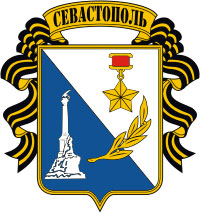
|
DECREE OF THE PRESIDIUM OF THE SUPREME SOVIET OF THE USSR
ON THE AWARD OF THE HERO-CITY SEBASTOPOL THE ORDER OF LENIN AND THE GOLD STAR MEDAL
For its outstanding services to the country, courage and heroism, shown by the workers of the city of Sebastopol in the fight against the Nazi invaders, and to commemorate the 20th anniversary of Victory in the Great Patriotic War of 1941-1945, to hand the heroic city of Sebastopol, the Order of Lenin and the Gold Star Medal.
The Kremlin, Moscow.
May 8, 1965
Chairman of the Presidium of the Supreme Soviet of the USSR
A. MIKOYAN
Secretary of the Presidium of the Supreme Soviet of the USSR
M. GEORGADZE
|
|
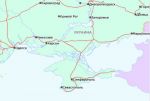 Sebastopol is a port city on the Black Sea coast of the Crimean peninsula, a Hero-City. It was founded in 1783, after the conquest of the Crimea by the Russian Empire as a fortress and later a port. Today, Sebastopol is the largest ice-free sea trade, fishing port, an industrial, scientific, technical, recreational, cultural and historical center of the Crimea. It is located in the southwestern part of the Crimea on the Heraclea peninsula. Sebastopol is a port city on the Black Sea coast of the Crimean peninsula, a Hero-City. It was founded in 1783, after the conquest of the Crimea by the Russian Empire as a fortress and later a port. Today, Sebastopol is the largest ice-free sea trade, fishing port, an industrial, scientific, technical, recreational, cultural and historical center of the Crimea. It is located in the southwestern part of the Crimea on the Heraclea peninsula.
In Sebastopol the war began at dawn on June 22, when the enemy aircraft dropped the first bombs on the city.
German troops’ break-through into the Crimea in October 1941 created an immediate threat to Sebastopol. The enemy tried to take the city on the move, but ran into a heroic resistance of the Soviet forces. Sebastopol was bravely defended by the Maritime Army troops and the Black Sea Fleet sailors.
On October 30, the enemy came onto the immediate approaches to the city. The 250-day heroic defense of Sebastopol began.
The city party organization sent all the power of the population to support the troops and the front.
Deep underground, the whole city was built: hospitals, schools and kindergartens. Here, the enemy aircraft couldn’t reach the factories and workshops, manufacturing and repairing weapons and military equipment.
On November 11, the enemy launched the attack. During stubborn defensive battles, the citizens of Sebastopol repulsed all the attacks. On November 21, the enemy, suffering heavy losses, was forced to halt the offensive.
From 17 to 31 December, the enemy launched a new offensive on Sebastopol, which was also repulsed by brave defenders.
Sea lines of communication remained as the only route that connected the besieged city with the rear. Ships and vessels in the difficult conditions brought reinforcements, ammunition and provisions. Sebastopol remained unapproachable, restricting large enemy forces.
By the beginning of a new attack, the enemy created a large superiority in men, artillery and tanks. Within 5 days, from 2 to 7 June 1942, the enemy had a powerful artillery and air preparation, after which the offensive went on.
Coastal Army troops, sailors and airmen of the Black Sea Fleet fought to the death, showing heroism, and only after the order of the Supreme Command on June 4, they left the city.
The heroic Sebastopol epic during eight months went down in history as an example of indomitable strength of the people and their selfless devotion to the motherland. The enemy did not break the will and courage of the people caught up in the occupation. They continued their heroic struggle in the enemy rear.
Liberation of Sebastopol began on May 5, 1944 during the Crimean offensive. Especially hot battles were fastened on Sapun-hill, — a key enemy defense. On May 9, 1944 Sebastopol — the city of Russian military glory — was released.
|
Kerch
|
|
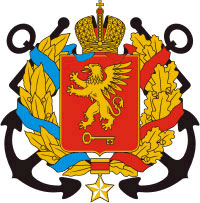
|
DECREE OF THE PRESIDIUM OF THE SUPREME SOVIET OF THE USSR
ON THE AWARD OF THE CITY OF KERCH THE HONORARY TITLE HERO-CITY
For its outstanding services to the country, mass heroism and courage, shown by the Defenders of Kerch and the soldiers of the Soviet Army, the Naval Fleet and Aviation in the fight against the Nazi invaders, and to commemorate the 30th anniversary of defeat of the Nazi invaders, to award the city of Kerch the honorary title Hero-City, and to hand the Order of Lenin and the Gold Star Medal.
The Kremlin, Moscow.
September 14, 1973
Chairman of the Presidium of the Supreme Soviet of the USSR
N. PODGORNY
Secretary of the Presidium of the Supreme Soviet of the USSR
M. GEORGADZE
|
|
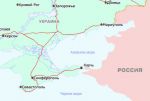 Kerch — a city in the eastern Crimea on the shore of the Kerch Strait, a major industrial and transportation hub, and a center of tourism and summer resort — is one of the oldest cities in the world. Kerch — a city in the eastern Crimea on the shore of the Kerch Strait, a major industrial and transportation hub, and a center of tourism and summer resort — is one of the oldest cities in the world.
In the glorious chronicle of the hero-cities Kerch takes a worthy place — it is a major port on the coast of the Kerch Strait, a city of metallurgists, ships and fishermen.
Already in October 1941 the city was repeatedly exposed to massive strikes by the enemy aircraft, and in mid-November, after two weeks of fierce fighting on the Kerch Peninsula, it was captured by the Nazis.
On December 30, 1941 during Kerch-Feodosia operation, Kerch was liberated by the 51th Army.
In May 1942 the enemy, concentrating large forces on the Kerch peninsula, began a new offensive. After fierce fighting the town was again abandoned by the Soviet troops. The legendary page in the history of World War II became a long and bitter struggle defense in Adzhimushkay quarries. The Soviet patriots showed the world a great example of loyalty to the military duty, mutual assistance, and military brotherhood. The members of the underground and partisans actively struggled against the Nazi invaders.
The defeat of the Nazis in the Caucasus and evasion of the Soviet troops on the Taman Peninsula allowed to start fighting for the liberation of Kerch and the Crimea. On November 1, 1943 the soldiers of the 18th Army and the Black Sea Fleet landed near Eltigen. Eltigen defenders obtained immortality. Eltigen went down in history under the name “Tierra del Fuego”. For 36 days and nights the fire was ruffling there. Marines fought with the Nazis, showing amazing courage, resilience and heroism. The landing of the 18th Army near Eltigen diverted considerable enemy forces and contributed to the success of the 56th Army, whose troops captured the important bridgehead in the north-east of Kerch.
On April 11, 1944 soldiers of the Independent Coastal Army, the Black Sea Fleet and Azov Flotilla supported by the connections of the 4th Air Army stormed the city, and after fierce battles freed it. The victorious banner hoisted on Mount Mithridates, where now stands a granite obelisk of Fame and Eternal Flame burns in memory of the fallen and to honor the living, those who here on earth of Kerch, defended the freedom and independence of our motherland.
|
Novorossiysk
|
|
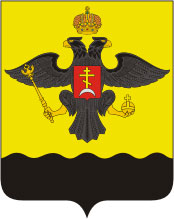
|
DECREE OF THE PRESIDIUM OF THE SUPREME SOVIET OF THE USSR
ON THE AWARD OF THE CITY OF NOVOROSSIYSK THE HONORARY TITLE HERO-CITY
For its outstanding services to the country, mass heroism and courage, shown by the workers of Novorossiysk and the soldiers of the Soviet Army, the Naval Fleet and Aviation during the Great Patriotic War, and to commemorate the 30th anniversary of defeat of the Nazi invaders to award the city of Novorossiysk the honorary title Hero-City, and to hand the Order of Lenin and the Gold Star Medal.
The Kremlin, Moscow.
September 14, 1973
Chairman of the Presidium of the Supreme Soviet of the USSR
N. PODGORNY
Secretary of the Presidium of the Supreme Soviet of the USSR
M. GEORGADZE
|
 Novorossiysk is a city in the Krasnodar Territory, on the shores of the Black Sea Tsemess Bay. It is the largest Russian port on the Black Sea. The city is situated in one of the most convenient deep-water bays of the Black Sea. Novorossiysk is a city in the Krasnodar Territory, on the shores of the Black Sea Tsemess Bay. It is the largest Russian port on the Black Sea. The city is situated in one of the most convenient deep-water bays of the Black Sea.
Battle for the Caucasus began in late July 1942. Over the year Novorossiysk remained one of the important areas of that struggle. The defense of Novorossiysk began in late August. Here, the troops of the 47th Army, the Black Sea Fleet and Azov Flotilla sailors, partisans and underground fighters bravely fought. On the firing line, created near the cement factories of the city, the Nazis attack was stopped. The enemy was not able to take advantage of Novorossiysk sea port. Not a single Nazi ship reached it. Destroyed to the ground, all in the smoke of fires, Novorossiysk persevered and won.
The heroes of the legendary “Minor Land” obtained immortality in the battles for Novorossiysk. Bloody fights on this beachhead area of 30 square kilometers continued 225 days. “Minor Land” enchained the major enemy forces and played a major role in the defeat of his troops in the area in 1943.
The nearest rear of Novorossiysk group of the Soviet troops was Gelendzhik, which workers implemented the front.
On September 9, 1943 the offensive of the North-Caucasian Front began. Simultaneously with the air landing at the port of Novorossiysk, the Soviet soldiers dealt a crushing blow to the enemy. The defeat of the Nazis near Novorossiysk was the beginning of the collapse of powerful fortifications on the Taman peninsula, the so-called “Blue Line”.
The victory at Novorossiysk led to the expulsion of the enemy from the Taman Peninsula. In October 1943, as a result of the offensive of the North Caucasus Front, the liberation of the Caucasus from fascist invaders, and the liberation of the Crimea were completed.
“Battle of Novorossiysk went down in history as an example of indomitable will of the Soviet people to victory, martial valor and fearlessness, their uninterrupted devotion to Lenin’s party, the socialist homeland”, Leonid Brezhnev said on September 7, 1974 at the presentation of Novorossiysk high-reward — the Order of Lenin and the Gold Star Medal.
Novorossiysk working people hallow the memory of those who fought for their native city. Heroes’ Square with the Eternal Flame, a monumental sculptures The Warriors- defenders, The Unknown Sailor, The Unbroken, obelisks and plaques on the “Minor Land”, in the Valley of Death, in the Sheskharis and Sukhumi highway and the City’s History Museum resemble contemporaries and will remind the future generations of the heroic defenders of Novorossiysk, selflessly fulfilled their sacred duty.
|
Minsk
|
|
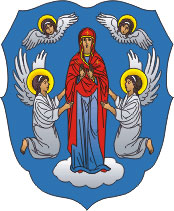
|
DECREE OF THE PRESIDIUM OF THE SUPREME SOVIET OF THE USSR
ON THE AWARD OF THE CITY OF MINSK THE HONORARY TITLE HERO-CITY
For its outstanding services to the country, mass heroism and courage, shown by the workers of the city of Minsk in the fight against the Nazi invaders, for the great role in development of the peoples’ guerrilla movement in Belorussia during the Great Patriotic War and to commemorate the 30th anniversary of defeat The Belorussian SSR of the Nazi invaders, to award the city of Minsk the honorary title Hero-City, and to hand the Order of Lenin and the Gold Star Medal.
The Kremlin, Moscow.
June 26, 1974
Chairman of the Presidium of the Supreme Soviet of the USSR
N. PODGORNY
Secretary of the Presidium of the Supreme Soviet of the USSR
M. GEORGADZE
|
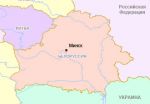 Minsk is the capital of the Republic of Belarus (from 1919), the center of the Minsk region. It is a major transport hub, a political, economic, cultural and scientific center of the country. The city is located near the geographic center of the country and stands on the river Svisloch. Minsk is the capital of the Republic of Belarus (from 1919), the center of the Minsk region. It is a major transport hub, a political, economic, cultural and scientific center of the country. The city is located near the geographic center of the country and stands on the river Svisloch.
Minsk is one of the first Soviet cities that took the blow of Hitler’s war machine.
On June 28, 1941, breaking the stubborn resistance of the Soviet troops, the Nazis captured Minsk.
Central Committee of the High Command and the Soviet government called for the deployment of the nationwide guerrilla warfare behind the enemy lines, and found a warm response among the working people of Belarus. Direct organizer of the guerrilla movement of the Belarusian people was the Communist Party of Belarus. In the occupied territory of the BSSR operated clandestine network of regional, city and district Party committees, the primary Party organizations in the partisan units.
Large role in the deployment of the nationwide guerrilla struggle in the country played Minsk patriots. A large underground party organization, headed by the Municipal Party Committee operated there. The struggle against the invaders was conducted in difficult circumstances. Despite the large gaps, the Minsk underground continued to live and fight.
Members of the underground printed and distributed leaflets, reports of the Soviet Information Bureau; a bright page in the history of the Minsk underground was The Star (Zvezda) newspaper publication of the underground city party committee and then The Minsk Bolshevik.
In 1943-1944 work of the Minsk underground was especially active. Organizational work on the formation of underground groups in Minsk enterprises and institutions increased. Because of the mass workers’ sabotage and subversion of the underground in the city, many enterprises were inactive. On the Fight of the Minsk underground Brezhnev said, “Minsk became a pandemonium of hell for the invaders. Not a single day the enemy felt safe. Fifteen hundred combat operations — here an impressive total of three years of the Minsk underground fighting is” Thousands of threads connected the city underground with the guerrillas. Several guerrilla groups were created with the direct involvement of the Minsk underground.
Partisans and underground fighters controlled more than half of the occupied territory of the republic. In Minsk, they helped save many important objects, mined enemy from destruction.
In the Belarusian offensive operation in 1944 over a thousand guerrilla groups actively assisted the Soviet troops to liberate towns and villages.
On July 3, after fierce fighting, the troops of the 3rd, 2nd, and 1st Belorussian Fronts with the guerrillas’ participation, Minsk was liberated.
Now, Minsk, reborn from the ruins and ashes, is one of the largest modern industrial and cultural centers.
Unprecedented feat of the soldiers and partisans liberated Belarus from Nazi invaders, will forever remain in people’s memory.
|
Tula
|
|
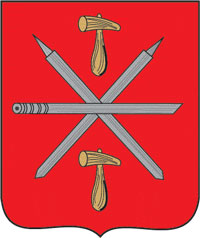
|
DECREE OF THE PRESIDIUM OF THE SUPREME SOVIET OF THE USSR
ON THE AWARD OF THE CITY OF TULA THE HONORARY TITLE HERO-CITY
For courage and heroism, shown by the defenders of the city of Tula in the heroic defense of the city that played an important role in fight against the Nazi invaders at Moscow during the Great Patriotic War, to award the city of Tula the honorary title Hero-City, and to hand the Gold Star Medal.
The Kremlin, Moscow.
December 7, 1976
Chairman of the Presidium of the Supreme Soviet of the USSR
N. PODGORNY
Secretary of the Presidium of the Supreme Soviet of the USSR
M. GEORGADZE
|
|
 Tula Tula is a major administrative and industrial center in the Tula region, an important communication center. The city is located 193 kilometers south of Moscow on the river Upa. Tula Tula is a major administrative and industrial center in the Tula region, an important communication center. The city is located 193 kilometers south of Moscow on the river Upa.
In harsh autumn of 1941, the city successfully completed the role of the southern outpost of the capital.
In the end of October 1941, armored divisions of the German fascist invaders, overcoming the stubborn resistance of the Soviet troops, came to Tula. On their way stood the soldiers of the Soviet Army, the Tula workers’ regiment and the NKVD regiment, formed by the employees of the Tula police.
For three days, the enemy violently attacked Tula, but its defenders bravely reflected all the attacks. Not breaking the resistance of Tula defenders by frontal attack, the Germans decided to bypass the city from the southeast and east. But this attempt failed. Soviet troops had not only withstood all the attacks of the German troops, but also tied up a large group of the enemy, bursting violently to Moscow.
Samples of courage, fortitude and heroism in Tula defense showed the Soviet soldiers and militia fighters. Unparalleled dedication and devotion to the Motherland showed the city workers who had made it an impregnable fortress for the enemy.
The heroic Tula defense foiled plans of the enemy to capture Moscow before winter. Resistance of its defenders ensured the stability of the troops of the left wing of the Western Front on the far southern outskirts of the capital. It also helped to stabilize the situation at the Bryansk Front.
In December 1941, the troops of the left wing of the Western Front destroyed a tank group of the German troops during the Tula offensive strike. The threat of the Soviet state’s capital from the south was eliminated.
|
Murmansk
|
|
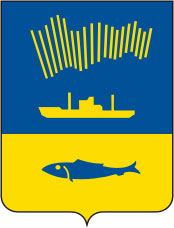
|
DECREE OF THE PRESIDIUM OF THE SUPREME SOVIET OF THE USSR
ON THE AWARD OF THE CITY OF MURMANSK THE HONORARY TITLE HERO-CITY
For its outstanding services to the country, mass heroism and courage, shown by the workers of the city, the soldiers of the Soviet Army, and the Naval Fleet during the Great Patriotic War, to award the city of Murmansk the honorary title Hero-City, and to hand the Order of Lenin and the Gold Star Medal.
The Kremlin, Moscow.
May 6, 1985
Chairman of the Presidium of the Supreme Soviet of the USSR
N. PODGORNY
Secretary of the Presidium of the Supreme Soviet of the USSR
M. GEORGADZE
|
|
 Murmansk is a Russian city, an administrative center of the Murmansk region. Murmansk is a Russian city, an administrative center of the Murmansk region.
Murmansk is located on the rocky eastern coast of the Kola Bay in the Barents Sea. It is the world’s largest city, located above the Arctic Polar Circle. It is one of the biggest ports of Russia.
In the west, where the rocky Iceland and the Faroe islands are, where the Atlantic and the Arctic oceans blend their waters, where the ships’s routes, leading from the Atlantic to the Arctic coast of Europe pass, the three countries met: Norway, Finland and the USSR. Norway was occupied by the Nazis, Finland was their ally. And here stretched their plans the Nazis. The enemy heavy cruiser Admiral Scheer got there, the German U-boat launched mines in the Gulf of Ob.
From the Far East, from Siberia — up and down the Yenisei and the Ob — our ships delivered important cargo to Arkhangelsk. Murmansk is linked by rail to the center of the country. The road was built hastily in the First World War — among the rocks and swamps —to link Russia with the Allied Britain and France.
In Murmansk the war began on June 29, 1941. Active military operations in the North began a week later than in other front parts. Operation to capture Murmansk and Polyarny (with the subsequent capture of Arkhangelsk), the Germans called Silver Fox.
Fascists were particularly interested in the number of neither their ships, nor ours. Just like on the Baltic and the Black Sea, they hoped to take our bases on the Barents Sea from the land. And also with lightning speed.
As elsewhere at the Soviet-German front, fighting in the north immediately got hard fought performance. The Soviet soldiers and Marines responded with fierce resistance, and sustained power. The residents in Germany in those days used to the triumphant reports from the Eastern Front. But from that polar land they didn’t receive such messages. Like in the Battle of Moscow, the enemy was stopped not by the frost, or snow, not by Murmansk tundra, or hills, but by the heroism of the Soviet people.
Having a lot of bombers, the Germans fiercely bombed our positions before the attack. In those difficult times fighter jets flew to help the infantry. September 15, is a particularly memorable day for Nazi pilots. In the morning seven Safonov’s fighter planes led a large group of the enemy bombers turn back and drop bombs on their positions.
Navy was also involved in the reflection of the offensive of the Nazis inland. Thousands of volunteers went into the Marines. Ships with their anti-aircraft artillery defended Murmansk from the aircraft. At the time, naval patrol service was not easy. They had to beat off aircraft attacks, submarines and the enemy destroyers.
It took several months of fighting in the North. The Germans achieved very little. In the Murmansk region, they pushed our troops from the border to three dozen kilometers. They managed to cut off the Middle and Fish peninsulas, but they could not take them. The enemy managed to reach the railway neither on Ukhta, nor on Kandalaksha directions. In autumn 1941, the front line above the Arctic Circle was stabilized, and did not change till our offensive in 1944.
In late 1944, the Northern Fleet was almost three times greater than the number of the enemy aircraft.
Murmansk feat will go down in history as a symbol of our country and the unprecedented strength of mass heroism.
|
Smolensk
|
|
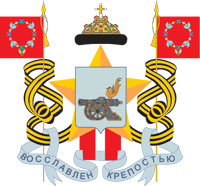
|
DECREE OF THE PRESIDIUM OF THE SUPREME SOVIET OF THE USSR
ON THE AWARD OF THE CITY OF SMOLENSK THE HONORARY TITLE HERO-CITY
For courage and heroism, shown by the defenders of the city of Smolensk, for mass heroism of the working people in fight against the Nazi invaders during the Great Patriotic War, to award the city of Smolensk the honorary title Hero-City, and to hand the Gold Star Medal.
The Kremlin, Moscow.
May 6, 1985
Chairman of the Presidium of the Supreme Soviet of the USSR
N. PODGORNY
Secretary of the Presidium of the Supreme Soviet of the USSR
M. GEORGADZE
|
|
 Smolensk is a Russian city, an administrative, industrial and cultural center of the Smolensk region, located in 419 kilometers to the west - south-west of Moscow in the upstream of the Dnieper. It has a favorable geographical position on the way from Moscow to Belarus, the Baltic states, Central and Western Europe. Smolensk is a Russian city, an administrative, industrial and cultural center of the Smolensk region, located in 419 kilometers to the west - south-west of Moscow in the upstream of the Dnieper. It has a favorable geographical position on the way from Moscow to Belarus, the Baltic states, Central and Western Europe.
The enemy’s plan was to cut our Western Front by powerful strike forces, to surround the main group of troops in the Smolensk region and open the way to Moscow.
At the walls of the ancient Russian city, once risen formidable obstacle to Napoleon’s troops moving to Moscow, a fierce battle spread out once again. It lasted two months ...
In the second half of July, fighting in the Smolensk region and further east became even more fierce. The enemy ran into active opposition of the Red Army.
On July 23, the troops of the 28th Group Army of the Roslavl township, and on July 24-25, the troops of the 30th and the 24th Armies from the Belyy and Yartsevo townships launched an offensive. The troops of the 16th and 20th Armies moved bypassing Smolensk from the north and south. The enemy immediately pulled in the Smolensk region the additional forces and tried to destroy the encircled troops of the 16th and 20th armies on the Western Front. The battle was extremely violent.
With the help of Rokossovsky’s troops which included tank units, most parts of the 16th and 20th armies managed to break out further south than Yartsevo, and go to the east bank of the Dnieper, where they joined the main forces of the front and took up the defense ...
The Battle of Smolensk takes an important place among the operations of the summer of 1941. Although the enemy defeat, as the Stavka planned, failed, but his strike groups were heavily mauled. According to the German generals in the Battle of Smolensk the Germans lost 250,000 soldiers and officers. On July 30, Hitler’s command ordered the Army Group Center to assume the defensive. The Soviet troops were dug in on the turn of Velikie Luki — Yartsevo — Krichev — Zhlobin.
During the battle of Smolensk the Red Army troops, the inhabitants of the city and its suburbs showed the greatest resistance. Fierce fighting was for each house and street in every town. Delay the enemy offensive on the main line was a major strategic success. As a result, we gained time for the preparation of strategic reserves and for defense activities on Moscow axis. At Smolensk, the Soviet Guard was born. Here, on July 14, 1941 in the battle near Orsha, battery captain I.A. Flerov pioneered setting rocket launchers — the legendary Katyusha ...
The Nazi military and political leadership, command and German troops themselves were convinced of the courage and heroism of the Soviet soldiers. For the time being they knew that the longer the war was moving into the country, the harder it was for them.
Serious discussions about the need to change the entire campaign began in Hitler’s Stavka. By the directive of July 30, the fascist command was forced to stop the offensive of the Army Group Center to Moscow. Later, the 2nd tank group and the 2nd army of the Army Group Center were turned to the south.
|
|
|
|
|
